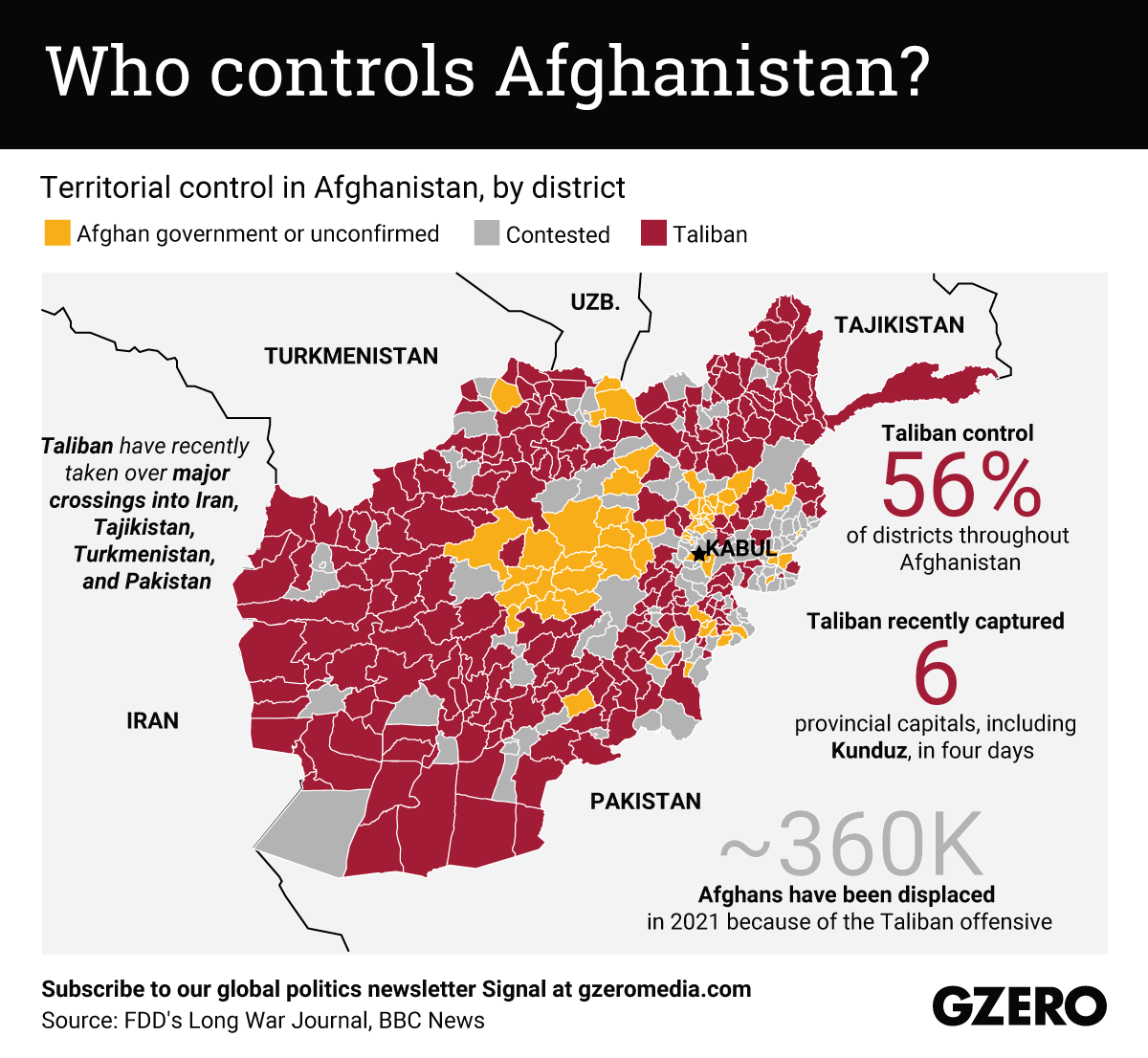August 09, 2021
The Taliban have made massive territorial gains in Afghanistan since the Biden administration announced that it would withdraw all US forces by September of this year. In many instances, Afghan security forces have abandoned their bases and handed over territory rather than confront Taliban fighters directly. Recently, Taliban militants gained control of major crossings, including the Islam Qala crossing between Afghanistan and Iran, which generates $20 million in monthly revenue for the Afghan government, as well as the critical Wesh-Chaman border crossing with Pakistan. With the US withdrawal already more than 90 percent complete, the Taliban already control more than half of all Afghan districts. So as the last few US forces prepare to leave, we take a look at who controls what in Afghanistan. Spoiler: it's a significantly different state of play from when we last mapped it out two years ago.
From Your Site Articles
- Taliban takeover embarrassing for Biden; political impact of wildfires - GZERO Media ›
- What does a Taliban takeover of Afghanistan actually mean? - GZERO Media ›
- The US can advance democracy without being the world's sheriff - GZERO Media ›
- The fallout from US Afghanistan withdrawal: a Marine's perspective - GZERO Media ›
- US Afghanistan withdrawal: a “digital Dunkirk” - GZERO Media ›
- Petraeus on the Afghanistan crisis - GZERO Media ›
More For You
- YouTube
With the global order under increasing strain, 2026 is shaping up to be a tipping point for geopolitics. From political upheaval in the United States to widening conflicts abroad, the risks facing governments, markets, and societies are converging faster—and more forcefully—than at any time in recent memory. To break it all down, journalist Julia Chatterley moderated a wide-ranging conversation with Ian Bremmer, president of Eurasia Group and GZERO Media, and a panel of Eurasia Group experts, to examine the findings of their newly-released annual Top Risks of 2026 report.
Most Popular
- YouTube
Some of the regime’s best moments — did we miss any? #PUPPETREGIME
Ukrainian President Volodymyr Zelenskiy listens to US President Donald Trump, after Trump said that Russian President Vladimir Putin expressed willingness to help Ukraine "succeed," during a press conference at the Mar-a-Lago club, in Palm Beach, Florida, USA, on December 28, 2025.
REUTERS/Jonathan Ernst
© 2025 GZERO Media. All Rights Reserved | A Eurasia Group media company.
